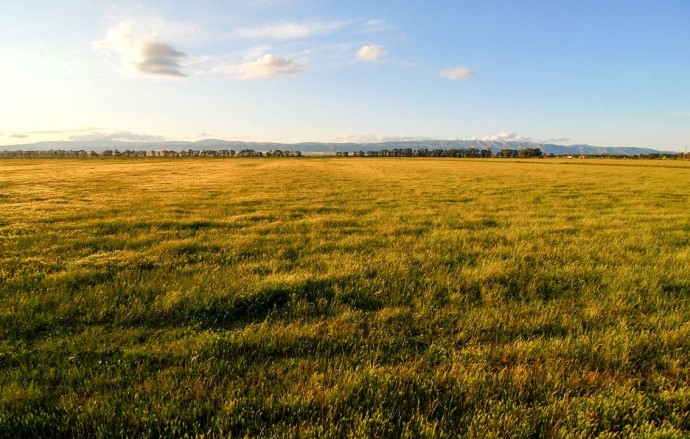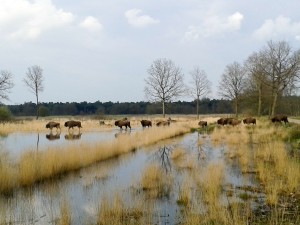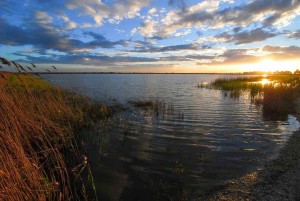This June, the eleventh web-based seminar of the European Rewilding Network took place through our online platform. Members from various European countries gathered to discuss and exchange knowledge about the conversion of former agricultural lands into a more natural setting that allows natural processes to shape the landscape once again, and support species to live here.

Members of the European Rewilding Network (ERN) are keen to learn from each other’s experiences and become inspired by best practice examples that are taking place all over our continent. One of the ways to do this is through web-based seminars, so-called ‘webinars’. This time, the subject was about transforming farmland that is no longer in use, into a natural setting aiming an increase in the variety of life in these areas. A number of participants took part in the discussions.
First, Anke Dielissen from ARK Nature, partner of Rewilding Europe, started with her presentation and provided insights into the work carried out at the Maashorst rewilding area, located in the province of Brabant, the Netherlands.

As a part of the process to create a large connected nature reserve in a region with villages around, agricultural areas are being transformed and given back to nature. The decision for this conversion was made in plans from different government authorities, after consultation with local stakeholders. The work started in 2014 and when ready, this area will host a multitude of species, ranging from butterflies to the European bison. Historically, trees have been planted here to harvest timber, and farmland was in use for sheep grazing. Nature areas became fragmented with farmlands in their core. As part of the Maashorst project, the majority of 50 farmers in the area are now selling or swapping their lands, with several willing to transform their properties into nature with the support of the project.
Today, wild-living herds of European bison, Tauros and Exmoor ponies replace former livestock and at the same time reduce human intervention. The combined impact of these species on the degraded habitats is already creating a half-open landscape and boosting the variety of animal and plant species. Anke emphasized the importance of cooperation with the wider community including the four local municipalities, in order to make the project idea a reality.
Next, Matteo Calderalla from the Centro Studi Naturalistici ONLUS presented the showcase of Oasi Lago Salso, an area located in the Puglia region in the southern part of Italy. For centuries, the practice of transhumance was very much alive in this region. Shepherds were herding large flocks of sheep over long distances through the countryside, severely impacting on the landscape. Since 2007, agricultural lands including Mediterranean wetlands are being returned to their natural state. More than 300 species of birds are currently present in this wetland area, many of them listed as priority species by the Birds Directive, while several LIFE projects have been run to conserve their habitats.

Part of the project includes conversion of agricultural lands into Mediterranean grasslands and restoring lakes and small wetlands surrounded by reed beds, increasing the possibilities for nesting and feeding birds. Specific conservation efforts focus on lesser kestrel, white stork and ferruginous duck, the latter species here having the largest breeding population in Italy. Also species new to the area arrived at the scene.
Matteo stated that rewilding is happening here for more than ten years now and that changes in the landscape and the increased numbers and species of wildlife are very visible. Furthermore, he emphasized how communication and education activities, critical in this process, have resulted in increased number of visitors and tourists, in turn creating a positive effect on the local economy.
Based in these two examples, participants discussed the main challenges of working towards a more natural setting after land has been in use for farming practices. Although the presented case studies were very different, the projects showed similarity in experiences that can be used in other areas as well. In particular this was the case in how to involve local partners and make them part of the process. In addition, in both cases the projects had to deal with sometimes quite conservative opinions, also towards the use of large herbivores in their area. Education, awareness building and local involvement turned out to be the key to success.
The European Rewilding Network is steadily expanding and now counts 49 members from 23 countries located all over Europe. Rewilding Europe warmly welcomes new members to the Network, as we believe that exchanging knowledge on rewilding will be useful for all of us working to make Europe a wilder place.
